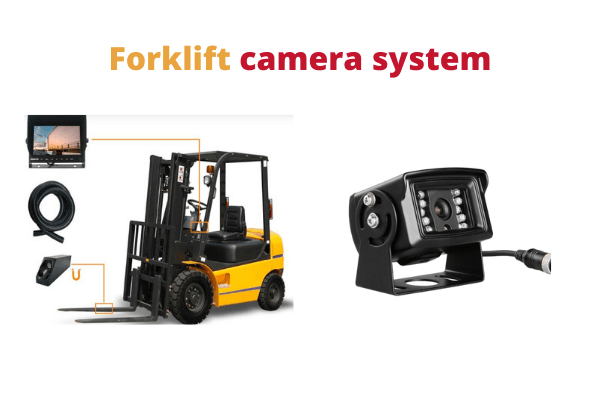Forklifts are indispensable tools in various industries, facilitating the movement of heavy loads with relative ease. However, their operation poses inherent risks, particularly when it comes to visibility.
Accidents involving forklifts can result in serious injuries and even fatalities, making safety measures a top priority for businesses. In recent years, camera systems have emerged as valuable additions to forklifts, enhancing visibility and safety in operational environments.
This article delves into the key features and benefits of camera systems for forklifts, shedding light on their importance in ensuring workplace safety.
Enhancing Visibility: A Critical Need
One of the primary challenges faced by forklift operators is limited visibility, especially when maneuvering in tight spaces or navigating obstructed pathways.
Traditional rearview mirrors and visual checks have their limitations, often leaving blind spots that increase the risk of accidents.
Moreover, factors such as poor lighting conditions or adverse weather can further exacerbate visibility issues, heightening the chances of collisions or accidents.
Key Features of Forklift Camera Systems
1. Multi-angle Views
Modern forklift safety camera systems offer multi-angle views, providing operators with comprehensive visibility of their surroundings.
These systems typically incorporate multiple cameras strategically positioned around the forklift, capturing real-time footage from different angles.
This holistic view enables operators to identify potential hazards, obstacles, or pedestrians in their vicinity, significantly reducing the risk of accidents.
2. Night Vision Capabilities
In environments with low light conditions or during night operations, visibility becomes even more challenging.
Forklift camera systems equipped with night vision capabilities utilize infrared technology to capture clear images in the dark.
This feature ensures uninterrupted visibility regardless of the time of day, enhancing safety and operational efficiency, particularly in 24/7 facilities.
3. Object Detection and Warning Systems
Another notable feature of advanced forklift camera systems is their object detection and warning systems. Utilizing cutting-edge technology such as LiDAR (Light Detection and Ranging) or radar sensors, these systems can detect obstacles or pedestrians in the forklift’s path.
Upon detection, they trigger audible and visual warnings for the operator, alerting them to take necessary evasive action. This proactive approach minimizes the likelihood of collisions and mitigates the risk of accidents in busy work environments.
4. Recording and Playback Functionality
Many forklift camera systems come equipped with recording and playback functionality, allowing operators and supervisors to review footage of past operations.
This feature serves multiple purposes, including incident investigation, training, and performance evaluation.
By analyzing recorded footage, businesses can identify areas for improvement, enforce safety protocols, and mitigate the recurrence of accidents or near misses.
5. Integration with Telematics and Fleet Management Systems
Integrating forklift camera systems with telematics and fleet management systems offers additional benefits in terms of safety and operational efficiency.
Real-time monitoring and data analytics capabilities enable businesses to track forklift movements, identify patterns of risky behavior, and implement preventive measures.
Furthermore, integration with existing systems facilitates seamless communication and data sharing across the organization, streamlining workflow and enhancing overall productivity.
Benefits of Forklift Camera Systems
1. Improved Safety
The primary benefit of forklift camera systems is the significant improvement in safety they offer. By enhancing visibility and providing advanced warning systems, these systems help prevent accidents, protect personnel, and minimize the risk of property damage.
The proactive approach to safety empowers operators to make informed decisions and respond effectively to potential hazards, fostering a culture of safety within the workplace.
2. Reduced Accidents and Downtime
The implementation of forklift camera systems can lead to a substantial reduction in accidents and associated downtime.
By mitigating the risk of collisions, injuries, and damage to equipment or inventory, businesses can avoid costly disruptions to operations.
Moreover, the recording and playback functionality enables swift incident investigation and resolution, minimizing downtime and optimizing workflow continuity.
3. Enhanced Operational Efficiency
In addition to safety benefits, forklift camera systems contribute to enhanced operational efficiency. Improved visibility and object detection systems enable smoother navigation and maneuvering, reducing the time required to complete tasks.
Furthermore, the integration with telematics and fleet management systems facilitates optimized route planning, asset utilization, and maintenance scheduling, maximizing productivity and resource efficiency.
4. Compliance with Regulatory Standards
By investing in forklift camera systems, businesses demonstrate their commitment to workplace safety and compliance with regulatory standards.
Many regulatory bodies mandate the use of safety technologies, including camera systems, in industrial settings to prevent accidents and protect workers.
Implementing these systems not only ensures regulatory compliance but also mitigates the risk of fines, penalties, and legal liabilities associated with workplace accidents.
5. Employee Training and Development
Forklift camera systems serve as valuable tools for employee training and development initiatives. By reviewing recorded footage, operators can gain insights into their performance, identify areas for improvement, and refine their skills accordingly.
Moreover, supervisors can use the footage to provide constructive feedback, conduct virtual simulations, and reinforce safety protocols, fostering continuous learning and professional growth among staff members.
Conclusion
In conclusion, forklift camera systems play a crucial role in enhancing safety, efficiency, and compliance in industrial environments.
By addressing visibility challenges and providing advanced warning systems, these systems mitigate the risk of accidents, reduce downtime, and optimize operational workflow.
Moreover, their integration with telematics and fleet management systems facilitates data-driven decision-making and ensures regulatory compliance. As businesses prioritize workplace safety and seek to optimize operational processes, investing in forklift camera systems emerges as a strategic imperative with long-term benefits.



